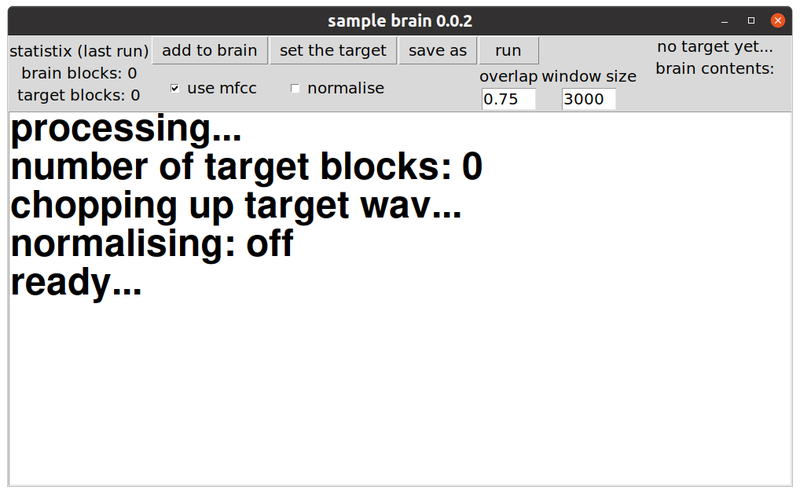Samplebrain
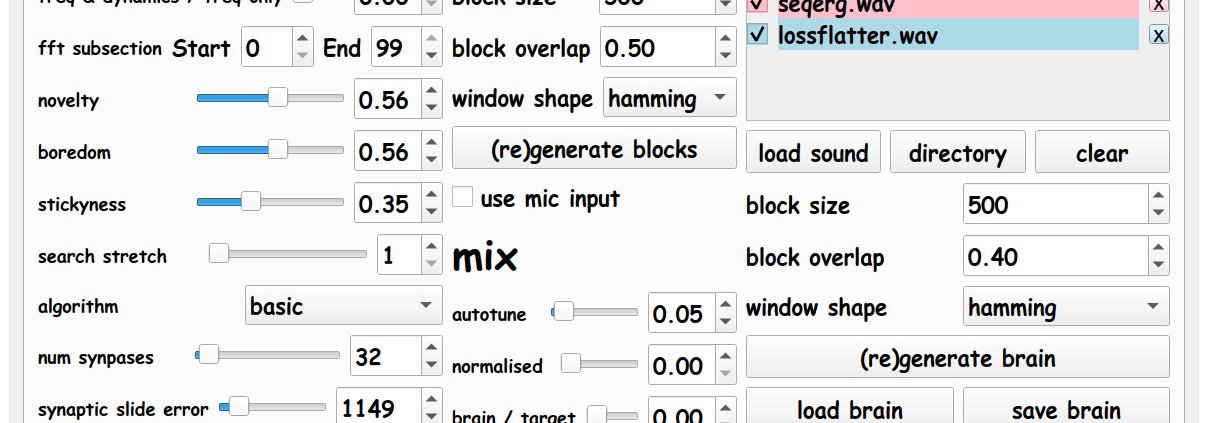
A custom sample mashing app designed with Aphex Twin.
Samplebrain chops samples up into a 'brain' of interconnected small sections called blocks which are connected into a network by similarity. It processes a target sample, chopping it up into blocks in the same way, and tries to match each block with one in it's brain to play in realtime.
This allows you to interpret a sound with a different one. As we worked on it (during 2015 and 2016) we gradually added more and more tweakable parameters until it became slightly out of control.
Samplebrain is free software - you can download the application on our gitlab page here.
Big thank you to Nik Gaffney for building the Apple M1 version.
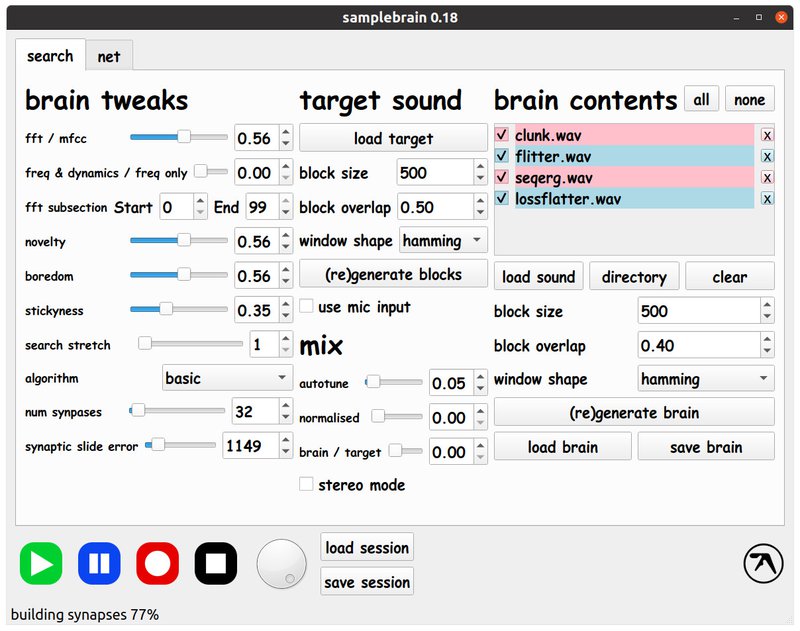
Huge thanks to Warp Records and everyone who wrote about the Samplebrain release, here are a few: NME, Pitchfork, Mixmag (though they link to the wrong Dave Griffiths! That Dave must be confused), Resident Advisor, Far Out, Future Music, The Quietus, Create Digital Media, Crack Magazine, edm.com, and DJ Mag. Thanks especially to Create Digital Media for describing us as a 'hyperactive organization for good' - we love it.
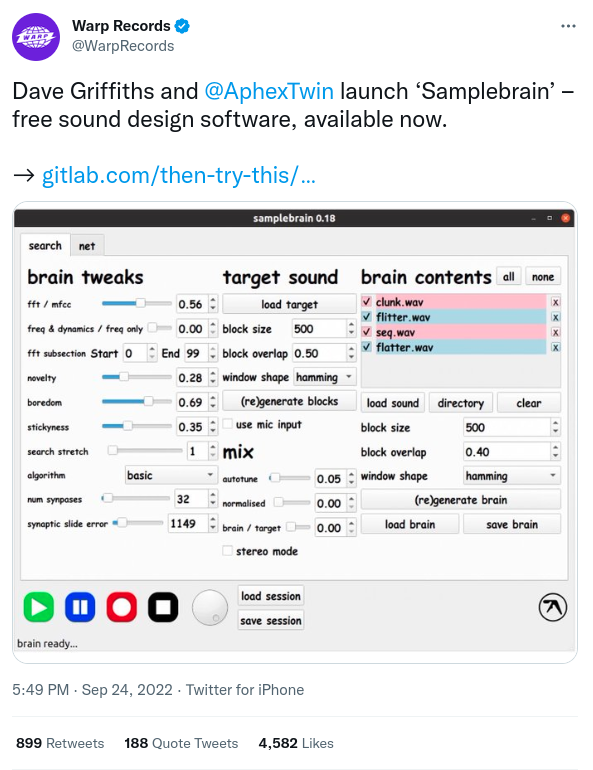
Free sound design software by Richard James aka Aphex Twin and Dave Griffiths"
aka Aphex Twin.
-
gitlab.com/then-try-this/samplebrain
-
Richard mentioned an idea he had about something like a giant brain that you could feed samples to. If you gave it enough, it would be able to take all the right bits to recreate a new sound you fed it. We talked it through a bit, I remember asking that surely something like this had been done before, and he said: "well probably, but not quite like this". A few sketches and prototypes later we started putting entire tracks through it to see how it interpreted them using different random instruments and sounds - and we knew we were on to something...Dave.
---
This idea came about a long time ago, not sure exactly when, 2002 ish
but when mp3's started to become a thing, when for the first time there
were a ton of them sitting on my hard drive and the brilliant Shazam had
recently launched.
Started thinking hmm all this music sitting there, maybe it can be used
for something else other than just playing or dj'ing [hi Atomixmp3 &
rudimentary max/msp patches]
I had originally contacted the founders of Shazam to discuss further
creative uses of their genius idea but they were busy making an
automatic dj program, I still think Shazam could be re-purposed for
something incredible but in the meantime we have Samplebrain.
What if you could reconstruct source audio from a selection of other
mp3's/audio on your computer?
What if you could build a 303 riff from only a cappella's or bubbling mud sounds?
What if you could sing a silly tune and rebuild it from classical music files?
You can do this with Samplebrain.
We soon realised after Dave had started to get
things going that with a few cheaty sliders you could actually re-make
anything from just one source file, so the options are all there to play
with.
Since funding this project I seemed to have found very little time to
explore it properly and the time has now come to let you lot have a
fiddle with it to.
Richard James.
Below is a schematic sketch from when we were planning how it should work, showing bits of waveforms being matched to a target on the right. We planned more visualisation like this, but as we focused on the real time aspects, listening became key to understanding how it was working.
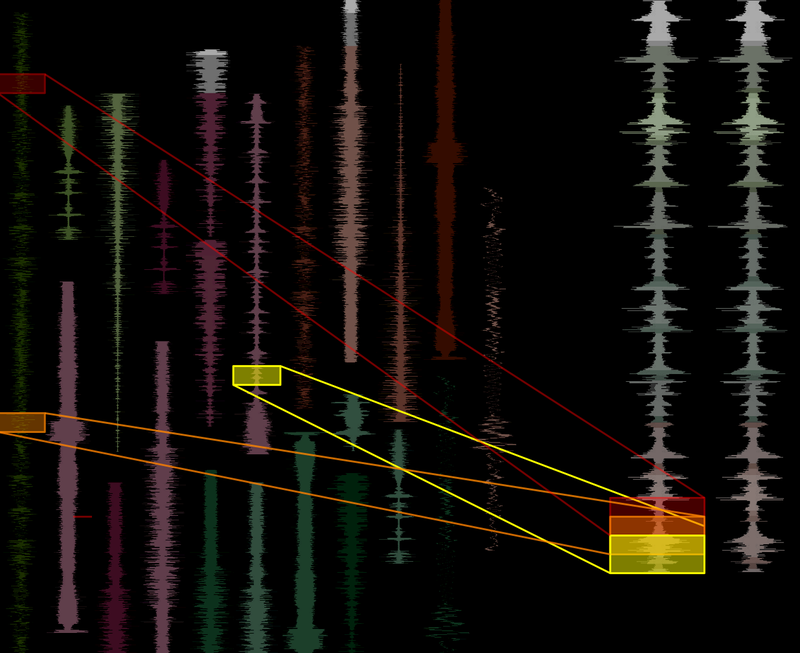
This is an early version (non-realtime) written in python which we used to prove the concept and quickly try a few ideas out which didn't make it into the final version.
